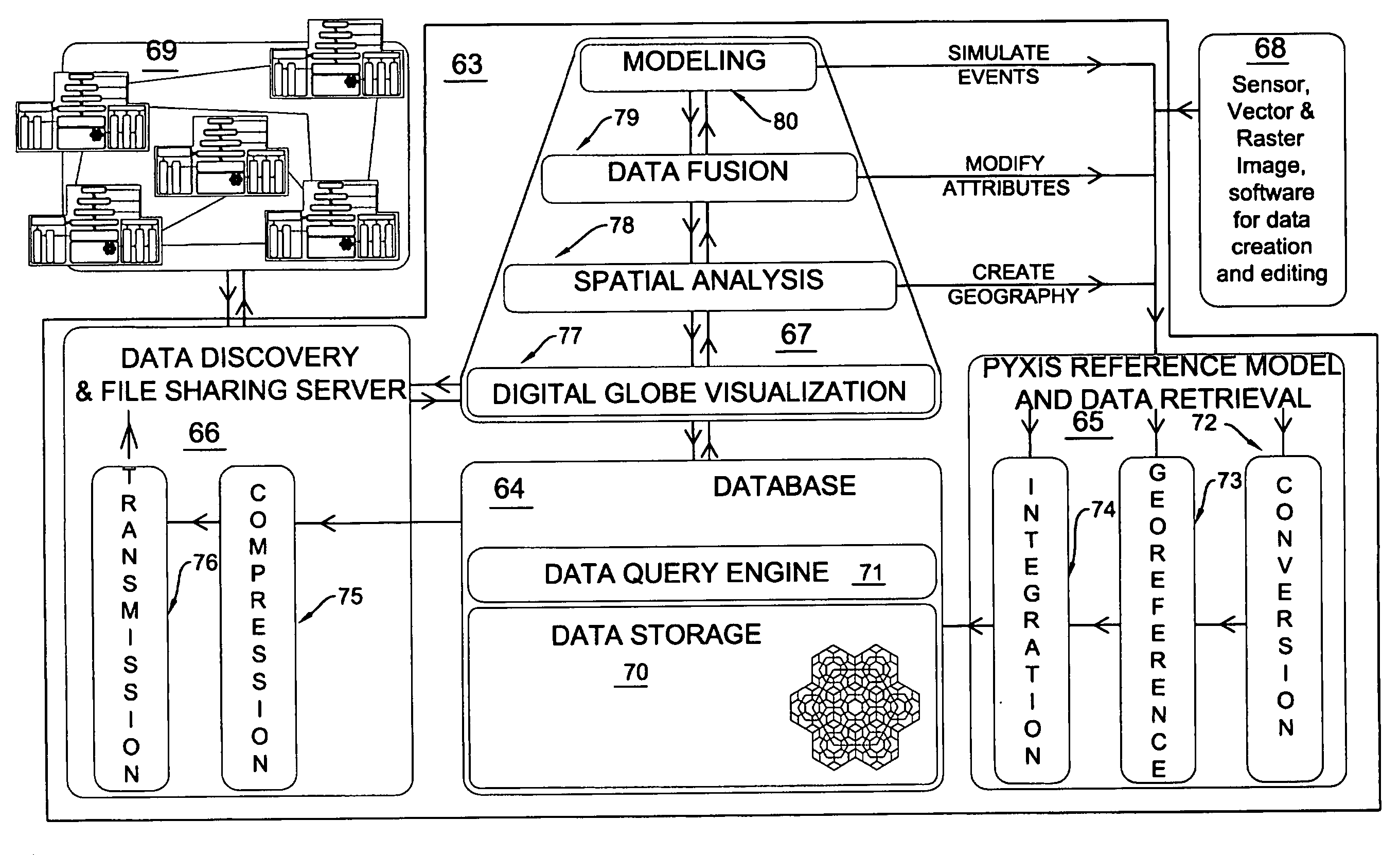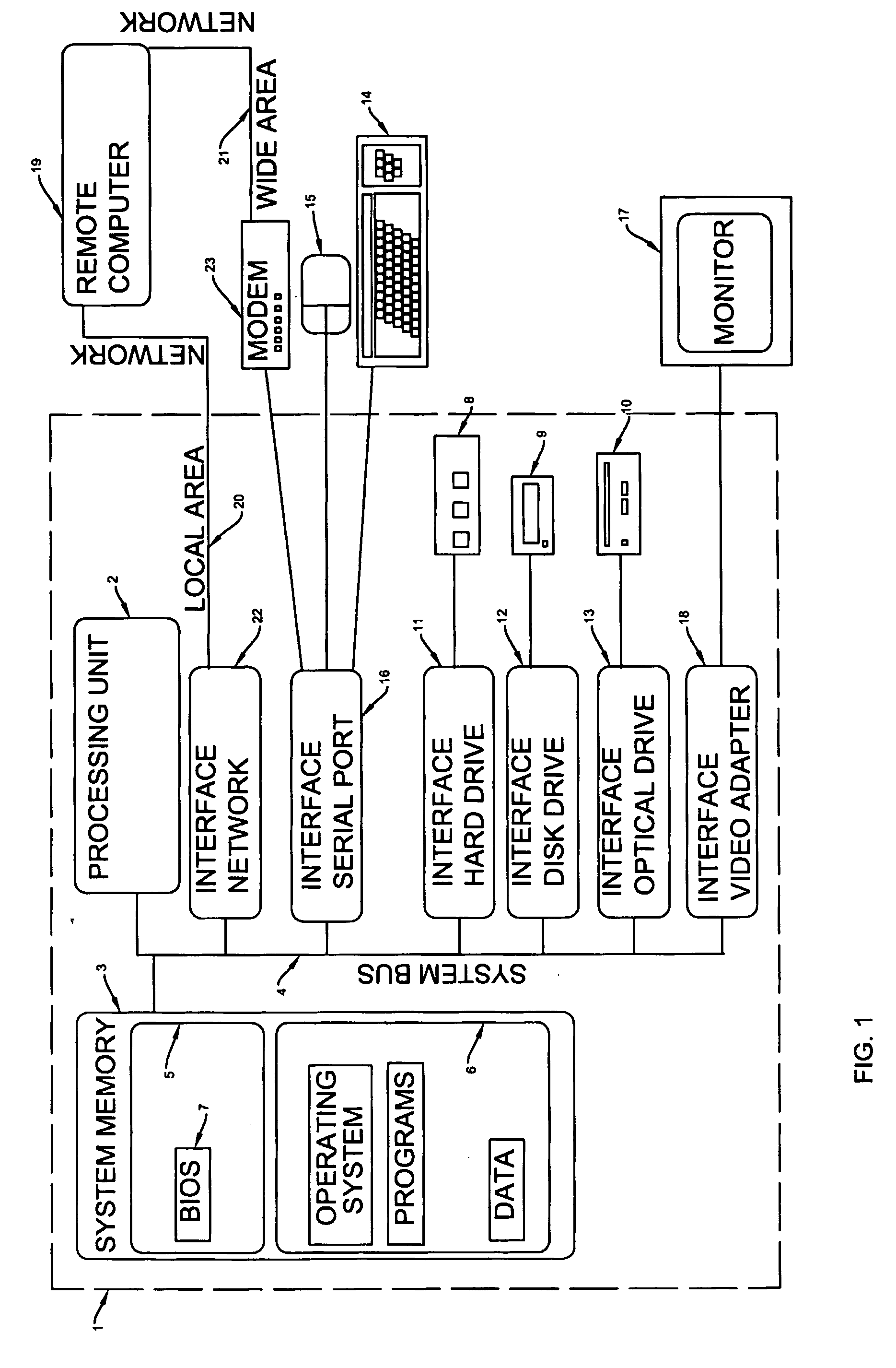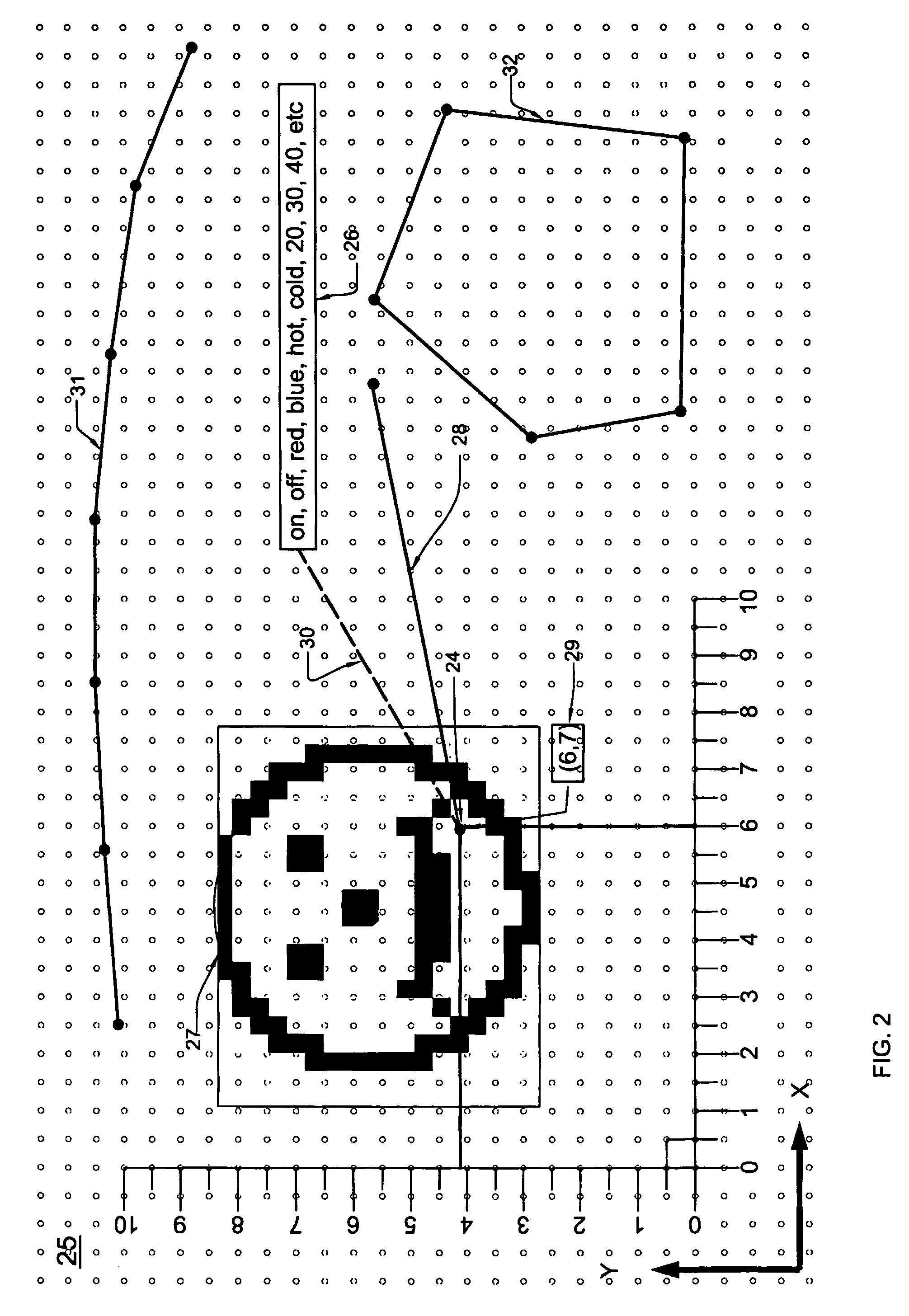Close-packed uniformly adjacent, multiresolutional overlapping spatial data ordering
a spatial data and spatial data technology, applied in the field of methods and digital information systems, can solve the problems of large global information volume, large global geospatial data storage volume, and inability to form uniform cells, etc., and achieve the effect of efficient computational storage, retrieval and integration
- Summary
- Abstract
- Description
- Claims
- Application Information
AI Technical Summary
Benefits of technology
Problems solved by technology
Method used
Image
Examples
Embodiment Construction
Apparatus and Operating Environment
[0055]FIG. 1 is a diagram of the apparatus and operating environment in conjunction with which embodiments of the invention may be practiced. The description of FIG. 1 is intended to provide a brief general description of suitable computer apparatus in conjunction with which the invention may be implemented. The computer, in conjunction with which embodiments of the invention may be practiced, may be a conventional computer, a distributed computer, an embedded computer or any other type of computer; the invention is not so limited. Such a computer typically includes one or more processing units as its processor, and a computer-readable medium such as a memory. The computer may also include a communications device such as a network adapter or a modem, so that it is able to communicatively couple other computers.
[0056] Although not required, the invention is described in the general context of computer-executable instructions being executed by a c...
PUM
 Login to View More
Login to View More Abstract
Description
Claims
Application Information
 Login to View More
Login to View More - R&D
- Intellectual Property
- Life Sciences
- Materials
- Tech Scout
- Unparalleled Data Quality
- Higher Quality Content
- 60% Fewer Hallucinations
Browse by: Latest US Patents, China's latest patents, Technical Efficacy Thesaurus, Application Domain, Technology Topic, Popular Technical Reports.
© 2025 PatSnap. All rights reserved.Legal|Privacy policy|Modern Slavery Act Transparency Statement|Sitemap|About US| Contact US: help@patsnap.com



